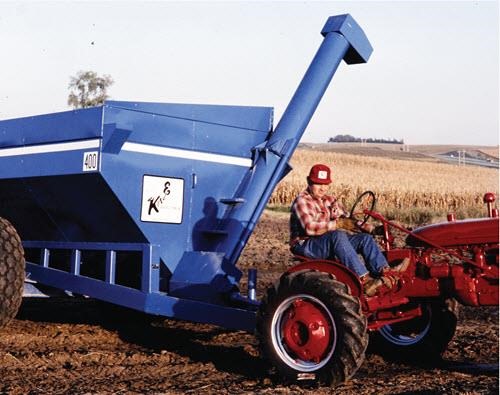The grand prize winner will meet Kinze founder Jon Kinzenbaw
By Diego Flammini
Staff Writer
Farms.com
A grain cart manufacturer is looking for photos of its oldest grain cart still in operation.
Kinze Manufacturing’s Oldest Grain Cart Contest encourages farmers with running Kinze grain carts to submit a photo of the cart along with the model number and serial number.
“We know there’s a lot of original grain carts out there being used today,” Susanne Kinzenbaw Veatch, president of Kinze Manufacturing and daughter of company founder Jon Kinzenbaw, told Farms.com. “It’s fun for us to see how many are out there and still in operation.”
Whomever submits the oldest grain cart entry will be declared the grand prize winner.
That person will have the opportunity to meet Jon Kinzenbaw, tour his private tractor collection, receive a signed copy of his book, “Fifty Years of Disruptive Innovation,” a $250 Kinze gift card and tours of the Kinze Innovation Center and factory in Williamsburg, Iowa.
Ten additional entries will receive a 1:32 scale grain cart signed by Jon Kinzenbaw and a $25 Kinze gift card.
The contest runs until the end of December and the winner will be announced in January.
Photos are coming in steadily, Kinzenbaw Veatch said.
“There’s a lot of excitement out there and farmers believe they have the oldest grain cart,” she said. “We’ve already got close to 70 entries and I imagine many more are going to come in. It’s been fun for us and for my dad to look at the pictures to see if he remembers the carts or the customers.”
The photo contest coincides with the 50th anniversary of the grain cart, which Kinzenbaw Veatch’s father invented in 1971. He started the company six years earlier.
At the time, Kinzenbaw’s innovations for the grain cart were met with resistance, his daughter said.
“It had large flotation tires in order to haul grain from the combine to the truck,” she said. “He had a lot of opposition from people telling him they would never work, but it made the farmer very efficient and it caught on.”

Jon Kinzenbaw with a Kinze 400 grain cart.
Kinze photo
Today, multiple equipment manufacturers offer grain carts with different features.
But they all were born out of the Kinze cart all those years ago.
“You see the carts now with tracks and other things, but everything came from the original concept my dad had,” Kinzenbaw Veatch said. “Our grain carts helped shape the industry.”
In addition to celebrating the 50th anniversary of the grain cart, Kinze is also releasing a new cart.
The Harvest Commander 1121 dual auger grain cart is now available for order from Kinze dealers for the 2022 season.
It has a 1,100-bushel capacity, optional Camso tracks and a dump door cleanout for easy and quick crop changeover.
The new cart is modeled after the Kinze 1050.
“That was the first grain cart I learned to drive as a kid and it was a very popular model,” Kinzenbaw Veatch said. “So we’ve introduced the 1050 and added some enhancements to it to make it the Harvest Commander.”